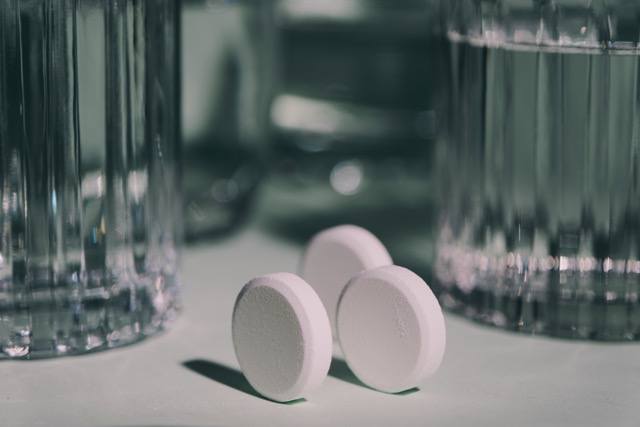How mitochondrial health affects aging
There are four scientifically proven ways to rejuvenate mitochondria

Mitochondria are essential for healthy aging. They not only generate around 90 percent of the energy (ATP) produced in our body, but are also involved in many cellular processes that are essential for healthy cell function. In fact, mitochondrial dysfunction is one of the hallmarks of aging. Modern theories of aging fall into two main categories: “programmed aging” and “aging as an accumulation of damage.” The theories of programmed aging state that aging follows a genetically encoded schedule — just like development in childhood and adolescence — which takes place in the form of changes in gene expression: As we age, some genes are switched on or overactivated, while others are switched off or suppressed. Theories of damage accumulation state that aging is primarily caused by cumulative damage to proteins, DNA, mitochondria, cells, and tissues of our body as a result of their activity.
However, these two theories and the processes they describe are not necessarily mutually exclusive. Both programmed aging and damage accumulation take place at the cellular level, and both can amplify each other's effects (i.e. changes in gene expression can accelerate damage accumulation, while damage accumulation can affect a cell's gene expression). Over time, there is a big difference between the “young me” and the “current me.” One of these differences is that our cells were able to produce more energy when we were younger. They also communicated better with other cells, were better able to adapt to stress, and had less cell damage. Many things go wrong when the human body ages, but the roots of the problem lie at the cellular level. And within cells, mitochondria play a key role in aging processes.
However, cells have a number of mechanisms that slow down aging and senescence. And here too, the focus is on mitochondria: The selective elimination of dysfunctional mitochondria (mitophagy) and their replacement with new mitochondria (mitochondrial biogenesis) is one of the key mechanisms that helps our cells — and us — to stay biologically younger. But what exactly are the functions of mitochondria and how does mitochondrial health affect aging?
What exactly are mitochondria?
Mitochondria are specialized structures found in cells. They are involved in many cellular processes, but their most important function is to extract the energy stored in the chemical bonds of nutrients (in the form of electrically charged particles, the electrons) and convert it into a form of energy that the cells can use for their activity. This form of energy is a molecule called ATP (from adenosine triphosphate), and the process is called cellular respiration.
The health of mitochondria, with their proper function and structure, is an essential prerequisite for cells to work optimally. When cells are efficiently supplied with energy and biological processes function smoothly, we enjoy better health. However, when mitochondria do not function properly, they begin to accumulate damage and cellular processes are gradually disrupted.
Viewed from a basic perspective, mitochondrial fitness is essential to our health in general. It is therefore not surprising that loss of mitochondrial function is a hallmark of aging and many age-related conditions, while maintaining mitochondrial fitness is associated with longer life expectancy (i.e. the length of time a person is healthy and functional—and not just alive).
The good news is that there are plenty of science-based measures to improve mitochondrial function—here are four of the most popular ones.
Four ways to rejuvenate mitochondria
Exercise
Exercise is one of the most effective measures for longevity. Practicing sport requires a lot of energy to fuel our muscles. This puts stress on the muscle mitochondria and signals to the rest of the cell that they need energy. Muscle cells respond by producing more mitochondria and more mitochondrial enzymes, which helps delay age-related decline in mitochondrial activity and muscle health.
While many types of exercise can promote mitochondrial function, HIIT fitness exercises are particularly beneficial for cell function in moderation. In a study by the Swedish School of Sports and Health Sciences, 11 healthy volunteers underwent regular HIIT sessions on an exercise bike (with intervals in which they fully pedaled followed by short periods of rest). The result? Improved performance and increased mitochondria production.
Cold therapy
There is evidence that cold therapy improves mitochondrial health through a process known as “mitochondrial biogenesis,” i.e. by increasing mitochondria production.
Chills release heat to burn fuels and use ATP for muscle contraction. Shivering therefore recruits mitochondria to generate heat indirectly. Therefore, exposure to cold in the form of cold showers or cryotherapy can stimulate mitochondria to keep us warm.
Heat
Heat can also trigger positive biological reactions. Heat acts as a mild stress signal and triggers cell reactions that promote adaptation.
Mitochondria are among the most important players in this adaptation, as heat stress has been shown to trigger positive adaptive reactions in the mitochondria, which increase their ability to function. This is in line with studies that show that regular sauna bathing can improve endurance performance and reduce the risk of cardiovascular disease.
Calorie restriction
Reducing calorie intake (e.g. through fasting cures) is one of the most successful approaches to increasing longevity. This success can be attributed, at least in part, to an increase in the bioenergetic efficiency of mitochondria.
By rejuvenating mitochondria, we support the optimal functioning of pretty much all cells and systems in our body. By strengthening mitochondria, we can extend our life expectancy and health.
References
- Chung, N., Park, J.H. & Lim, K. (2017). The effects of exercise and cold exposure on mitochondrial biogenesis in skeletal muscle and white adipose tissue. Journal of Exercise Nutrition & Biochemistry, 21(2), 39—47. https://doi.org/10.20463/jenb.2017.0020
- Port, P.S., Preece, C.N., Sorensen, J.R., Hancock, C.R. & Hyldahl, R.D. (2018). Repeated exposure to heat stress induces mitochondrial adaptation in human skeletal muscle. Journal of Applied Physiology, 125(5), 1447—1455. https://doi.org/10.1152/japplphysiol.00383.2018
- Laukkanen, T., Khan, H., Zaccardi, F. & Laukkanen, J.A. (2015). Association Between Sauna Bathing and Fatal Cardiovascular and All-Cause Mortality Events. JAMA Internal Medicine, 175(4), 542. https://doi.org/10.1001/jamainternmed.2014.8187
- Tafur, J. & Mills, P.J. (2008). Low-Intensity Light Therapy: Exploring the Role of Redox Mechanisms. Photomedicine and Laser Surgery, 26(4), 323—328. https://doi.org/10.1089/pho.2007.2184
- Gabel, K., Hoddy, K.K., Haggerty, N., Song, J., Kroeger, C.M., Trepanowski, J.F., Panda, S. & Varady, K.A. (2018). Effects of 8-hour time restricted feeding on body weight and metabolic disease risk factors in obese adults: A pilot study. Nutrition and healthy aging, 4(4), 345—353. https://doi.org/10.3233/nha-170036
- Mattson, M.P. & Wan, R. (2005). Beneficial effects of intermittent fasting and caloric restriction on the cardiovascular and cerebrovascular systems. Journal of Nutritional Biochemistry, 16(3), 129—137. https://doi.org/10.1016/j.jnutbio.2004.12.007
Publiziert
22.7.2024
Kategorie
Longevity

Experte
Mitochondria are essential for healthy aging. They not only generate around 90 percent of the energy (ATP) produced in our body, but are also involved in many cellular processes that are essential for healthy cell function. In fact, mitochondrial dysfunction is one of the hallmarks of aging. Modern theories of aging fall into two main categories: “programmed aging” and “aging as an accumulation of damage.” The theories of programmed aging state that aging follows a genetically encoded schedule — just like development in childhood and adolescence — which takes place in the form of changes in gene expression: As we age, some genes are switched on or overactivated, while others are switched off or suppressed. Theories of damage accumulation state that aging is primarily caused by cumulative damage to proteins, DNA, mitochondria, cells, and tissues of our body as a result of their activity.
However, these two theories and the processes they describe are not necessarily mutually exclusive. Both programmed aging and damage accumulation take place at the cellular level, and both can amplify each other's effects (i.e. changes in gene expression can accelerate damage accumulation, while damage accumulation can affect a cell's gene expression). Over time, there is a big difference between the “young me” and the “current me.” One of these differences is that our cells were able to produce more energy when we were younger. They also communicated better with other cells, were better able to adapt to stress, and had less cell damage. Many things go wrong when the human body ages, but the roots of the problem lie at the cellular level. And within cells, mitochondria play a key role in aging processes.
However, cells have a number of mechanisms that slow down aging and senescence. And here too, the focus is on mitochondria: The selective elimination of dysfunctional mitochondria (mitophagy) and their replacement with new mitochondria (mitochondrial biogenesis) is one of the key mechanisms that helps our cells — and us — to stay biologically younger. But what exactly are the functions of mitochondria and how does mitochondrial health affect aging?
What exactly are mitochondria?
Mitochondria are specialized structures found in cells. They are involved in many cellular processes, but their most important function is to extract the energy stored in the chemical bonds of nutrients (in the form of electrically charged particles, the electrons) and convert it into a form of energy that the cells can use for their activity. This form of energy is a molecule called ATP (from adenosine triphosphate), and the process is called cellular respiration.
The health of mitochondria, with their proper function and structure, is an essential prerequisite for cells to work optimally. When cells are efficiently supplied with energy and biological processes function smoothly, we enjoy better health. However, when mitochondria do not function properly, they begin to accumulate damage and cellular processes are gradually disrupted.
Viewed from a basic perspective, mitochondrial fitness is essential to our health in general. It is therefore not surprising that loss of mitochondrial function is a hallmark of aging and many age-related conditions, while maintaining mitochondrial fitness is associated with longer life expectancy (i.e. the length of time a person is healthy and functional—and not just alive).
The good news is that there are plenty of science-based measures to improve mitochondrial function—here are four of the most popular ones.
Four ways to rejuvenate mitochondria
Exercise
Exercise is one of the most effective measures for longevity. Practicing sport requires a lot of energy to fuel our muscles. This puts stress on the muscle mitochondria and signals to the rest of the cell that they need energy. Muscle cells respond by producing more mitochondria and more mitochondrial enzymes, which helps delay age-related decline in mitochondrial activity and muscle health.
While many types of exercise can promote mitochondrial function, HIIT fitness exercises are particularly beneficial for cell function in moderation. In a study by the Swedish School of Sports and Health Sciences, 11 healthy volunteers underwent regular HIIT sessions on an exercise bike (with intervals in which they fully pedaled followed by short periods of rest). The result? Improved performance and increased mitochondria production.
Cold therapy
There is evidence that cold therapy improves mitochondrial health through a process known as “mitochondrial biogenesis,” i.e. by increasing mitochondria production.
Chills release heat to burn fuels and use ATP for muscle contraction. Shivering therefore recruits mitochondria to generate heat indirectly. Therefore, exposure to cold in the form of cold showers or cryotherapy can stimulate mitochondria to keep us warm.
Heat
Heat can also trigger positive biological reactions. Heat acts as a mild stress signal and triggers cell reactions that promote adaptation.
Mitochondria are among the most important players in this adaptation, as heat stress has been shown to trigger positive adaptive reactions in the mitochondria, which increase their ability to function. This is in line with studies that show that regular sauna bathing can improve endurance performance and reduce the risk of cardiovascular disease.
Calorie restriction
Reducing calorie intake (e.g. through fasting cures) is one of the most successful approaches to increasing longevity. This success can be attributed, at least in part, to an increase in the bioenergetic efficiency of mitochondria.
By rejuvenating mitochondria, we support the optimal functioning of pretty much all cells and systems in our body. By strengthening mitochondria, we can extend our life expectancy and health.
Referenzen
- Chung, N., Park, J.H. & Lim, K. (2017). The effects of exercise and cold exposure on mitochondrial biogenesis in skeletal muscle and white adipose tissue. Journal of Exercise Nutrition & Biochemistry, 21(2), 39—47. https://doi.org/10.20463/jenb.2017.0020
- Port, P.S., Preece, C.N., Sorensen, J.R., Hancock, C.R. & Hyldahl, R.D. (2018). Repeated exposure to heat stress induces mitochondrial adaptation in human skeletal muscle. Journal of Applied Physiology, 125(5), 1447—1455. https://doi.org/10.1152/japplphysiol.00383.2018
- Laukkanen, T., Khan, H., Zaccardi, F. & Laukkanen, J.A. (2015). Association Between Sauna Bathing and Fatal Cardiovascular and All-Cause Mortality Events. JAMA Internal Medicine, 175(4), 542. https://doi.org/10.1001/jamainternmed.2014.8187
- Tafur, J. & Mills, P.J. (2008). Low-Intensity Light Therapy: Exploring the Role of Redox Mechanisms. Photomedicine and Laser Surgery, 26(4), 323—328. https://doi.org/10.1089/pho.2007.2184
- Gabel, K., Hoddy, K.K., Haggerty, N., Song, J., Kroeger, C.M., Trepanowski, J.F., Panda, S. & Varady, K.A. (2018). Effects of 8-hour time restricted feeding on body weight and metabolic disease risk factors in obese adults: A pilot study. Nutrition and healthy aging, 4(4), 345—353. https://doi.org/10.3233/nha-170036
- Mattson, M.P. & Wan, R. (2005). Beneficial effects of intermittent fasting and caloric restriction on the cardiovascular and cerebrovascular systems. Journal of Nutritional Biochemistry, 16(3), 129—137. https://doi.org/10.1016/j.jnutbio.2004.12.007
Publiziert
22.7.2024
Kategorie
Longevity

.svg)














